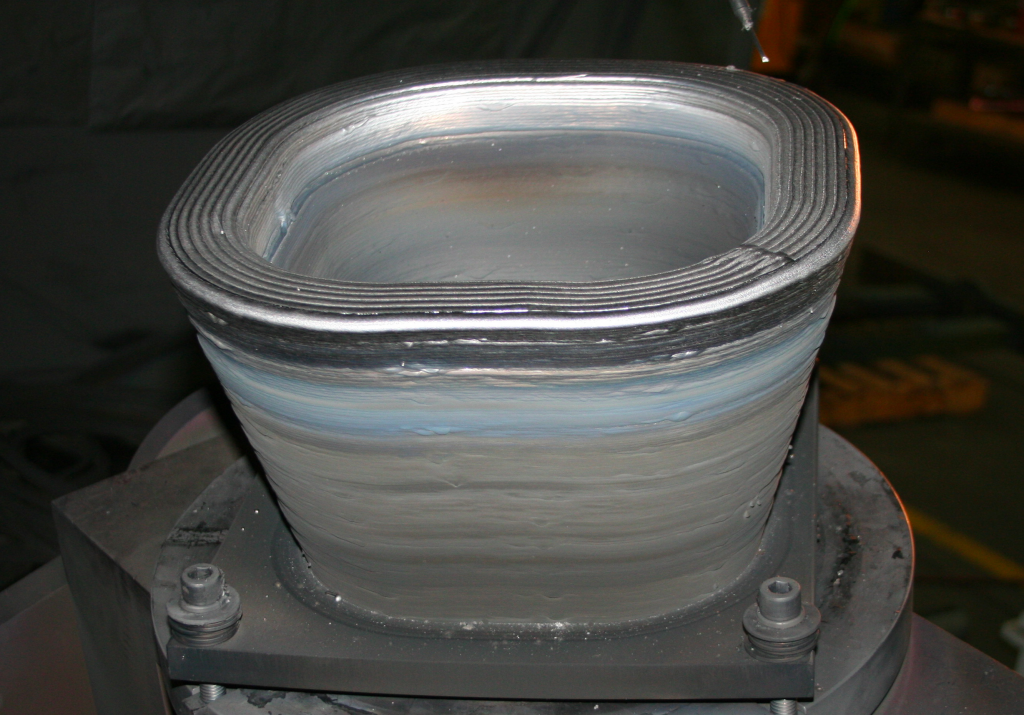Metal 3D printer manufacturer Sciaky Inc has revealed that during 2020, its Electron Beam Additive Manufacturing (EBAM) systems achieved their highest throughput to date, depositing over 12,000 lbs (5,443 kg) of titanium.
Despite supply chain disruption caused by COVID-19, the company still managed to overhaul the records set in previous years, thanks to the High Deposition Rate (HDR) of its machines. Sciaky also attributed the milestone to increased demand from unnamed aerospace and defense clients, which utilized its 3D printers for both prototyping and R&D applications.
“Sciaky’s EBAM is the most mature industrial additive manufacturing process in the industry for depositing titanium,” said Scott Phillips, President and CEO of Sciaky. “We recognize that there are many options in the market today for large format metal 3D printing solutions, but we are proud of being a trusted provider since 2009.”

Sciaky’s 12,000 lbs success
Sciaky first launched its EBAM technology as a service, but as interest began to pick up in 2014, it released its first turnkey system, targeting clients in the nuclear, aerospace and defense sectors. Essentially, EBAM is a Directed Energy Deposition (DED) process, in which an Electron Beam (EB) gun deposits a wire feedstock layer-by-layer, until the part reaches near-net shape.
So far, the company has integrated the technology into five large-format 3D printers, with the biggest being the EBAM 300, which features a 300” x 108” x 132” build volume. Sciaky describes its machines as “most widely scalable metal 3D printing solution in the industry,” and claims that they’re capable of producing alloy parts up to 19 feet in length.
In addition to the colossal size of its systems, the company also prides itself on having one of the industry’s fastest deposition rates. During testing, early EBAM machines were quoted at 15lbs/hr, but its gross rate is now around 25 lbs of metal per hour, somewhat explaining how Sciaky managed to reach its latest milestone.

Assessing EBAM’s applications
Sciaky has not only attributed its throughput record to the HDR of its printers, but the large orders it received from aerospace and defense clients last year. Although the firm has signed NDAs to prevent details of these projects from becoming public, its customer history could still provide some insight into the identity of its clientele.
For instance, as part of a deal with airplane manufacturer Airbus, the company has previously 3D printed parts for the internal structure of airplane wings. In the past, Sciaky has also been contracted to create maritime components, including a fabricated titanium ballast tank for International Submarine Engineering’s (ISE) AUV submarine.
More recently, the company revealed that it has seen a surge in demand for its EBAM systems, announcing 12 new aerospace projects, ranging from R&D to prototyping and end-use parts. Again, Sciaky wasn’t at liberty to identify its clientele, but it did disclose that they used high-value alloys such as titanium, inconel, niobium and copper-nickel.
Elsewhere, the firm’s technology has also been validated for intensive military applications such as 3D printing airframes, landing gear, and parts for missiles and vehicles. As a result, it would also be unsurprising if Sciaky’s customers turned out to be multinational contractors, or even armed forces operating at a national level.
Accelerating wire-fed DED
Several other companies have now started developing their own wire-fed DED technologies, as they attempt to catch up with Sciaky’s rapid deposition rate.
Chinese company Xi’an ZhiRong broke Sciaky’s monopoly on the technology when it unveiled its copycat ZcompleX EBAM 3D printer in April 2017. The firm attempted to apply for 20 patents related to the wire-fed system, which featured a 1000 x 600 x 500 mm vacuumed build chamber.
In terms of new DED processes, Reliance Precision and the University of Huddersfield are working on an alternative approach to EBAM as part of an Innovate UK-backed project. The program has seen a joint team of engineers attempt to enhance EB-based processes, in a way that drives their wider industry adoption.
Similarly, hybrid subtractive-additive systems specialist Hybrid Manufacturing Technologies (HMT) is leading another Innovate-UK R&D project called ‘FastWireAM.’ Through the program, HMT aims to fast-track the development of a new compact wire-feed DED system.
To stay up to date with the latest 3D printing news, don’t forget to subscribe to the 3D Printing Industry newsletter or follow us on Twitter or liking our page on Facebook.
Are you looking for a job in the additive manufacturing industry? Visit 3D Printing Jobs for a selection of roles in the industry.
Featured image shows one of Sciaky’s EBAM systems 3D printing a cylindrical structure. Image via Sciaky.



